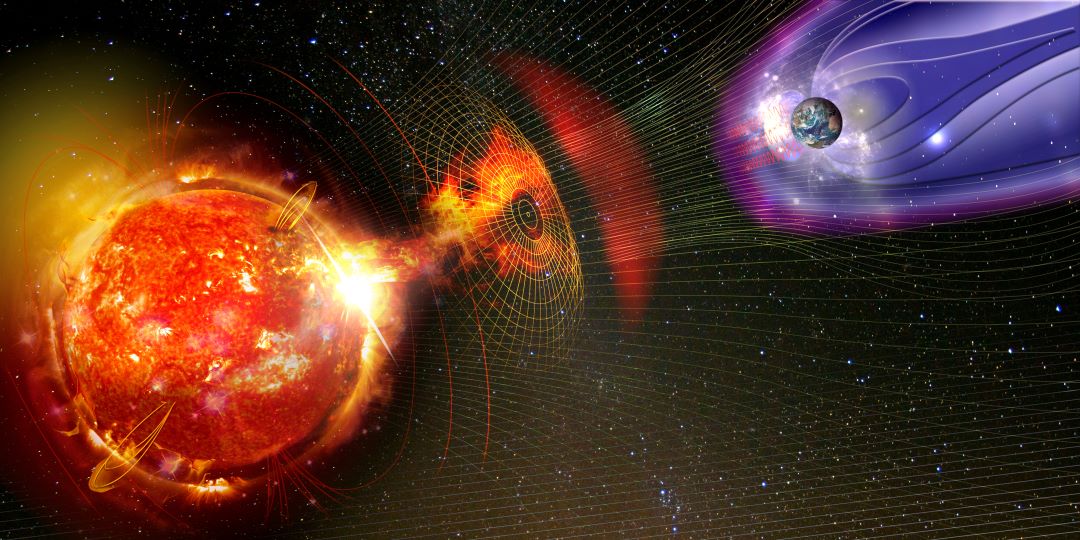By Joseph Bennett, NERC Senior Reliability Specialist
A geomagnetic disturbance (GMD) is also referred to as a geomagnetic storm. A geomagnetic storm is defined as a major disturbance of Earth’s magnetosphere that occurs when there is a very efficient exchange of energy from the solar wind into the space environment surrounding Earth.[1] Solar wind shockwaves can be caused by a solar flare that is followed by coronal mass ejections (CMEs), which eject charged and magnetized particles into space.[2]
Solar flares followed by CMEs happen often, but the majority of these do not produce a geomagnetic disturbance. Whether or not a solar flare will produce a geomagnetic disturbance is dependent on the magnitude of the flare, the direction at which the particles are emitted, and the orientation of the magnetic field. Although scientists can see when a solar flare is coming and determine when it will reach the Earth, it is a lot harder to determine if the solar flare will actually cause a geomagnetic disturbance and what the magnitude of that disturbance would be.
NASA has been working on a project named Solar Shield which is in its experimental phase. This project would allow NASA to determine which transformers on the power grid would be potentially effected by a geomagnetic disturbance.[3]
The reason that geomagnetic disturbances are of particular concern to the power grid is geomagnetically induced current (GIC). GIC are caused by geomagnetic disturbance causing electric current variations in the magnetosphere and the ionosphere which then cause effects to the Earth’s magnetic field. This causes currents to be induced in conductors such as power lines which will then effect the power grid transformers. GICs can cause “half-cycle saturation” of high-voltage Bulk-Power System transformers, which can lead to increased consumption of reactive power and creation of disruptive harmonics that can cause the sudden collapse of the Bulk-Power System. Further, half-cycle saturation from GICs can potentially damage Bulk-Power System transformers because of overheating.[4] It has been determined by NERC and the Department of Energy that GIC has a higher risk of causing damage to the North American power grid due to increases in high voltage power lines and electric energy usage.
One of the major concerns with geomagnetic disturbance affecting the power grid is that if a large enough disturbance occurs to damage transformers, the time required to fully restore the power grid could be extremely long. Due to the type of damage that would be caused, transformers would need to be replaced which can have a lead time of 12 months. If this were to happen on a large scale, the lead time would increase due to the sheer number of units that would need to be replaced and the manufacturing time required.
[1] Geomagnetic Storms, NOAA, http://www.swpc.noaa.gov/phenomena/geomagnetic-storms
[2] Short Circuiting Civilization: Predicting the Disruptive Potential of a Solar Storm, Scientific American, August 23, 2012, Saswato R. Das’ https://www.scientificamerican.com/article/short-circuiting-civilization/
[3] Solar Shield – Protecting the North American Power Grid, NASA, October 26, 2010; Dr. Tony Philips, https://science.nasa.gov/science-news/science-at-nasa/2010/26oct_solarshield
[4] Reliability Standards for Geomagnetic Disturbances, 143 FERC ¶ 61,147; 18 CFR Part 40, Docket No. RM12-22-000; Order No. 779, May 16, 2013; https://www.ferc.gov/whats-new/comm-meet/2013/051613/E-5.pdf
